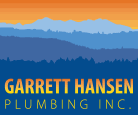What Is Reverse Osmosis?
December 21, 2018 10:00 pm Leave your thoughtsModern technology allows property owners to enjoy a slew of convenient innovations for their utility systems. However, not everyone is familiar with the latest and greatest features of water filtration systems in Glenwood Springs, CO.
This includes reverse osmosis. While this system has become fairly common, many people are not familiar with what exactly this is, what it does and what benefits it offers to property owners. Here’s the FAQ to keep you informed.
What is reverse osmosis?
Reverse osmosis makes use of a semi-permeable, thin membrane to filter water. This specialized filtration system allows water to pass through the membrane while blocking bacteria, salts and other impurities in the water.
How does reverse osmosis work?
In nature, water with dissolved salts will seek higher salt concentration. In other words, the natural flow is from lower concentration to higher. This osmotic process can be found in plants and the human kidneys.
In a reverse osmosis system, the opposite is true. This system uses pump pressure to overcome osmosis (reverse it). It forces the water through a membrane, where impurities are removed. Thus, the water goes from high concentration of salts to lower. The final result is purified water.
What are the main components of a reverse osmosis system?
Reverse osmosis systems contain membranes, which are cased in a housing. These housings are grouped into stages. One system may have up to three stages.
The system also features a pressure pump, cartridge filtration and a control system. Larger systems include control valves and transmitters that adjust pressure, flow and temperature.
What are the benefits of reverse osmosis?
With the use of this type of water filtration system in Glenwood Springs, CO, property owners can reduce wastewater and enjoy purified water for drinking and cleaning. Larger systems may also be used for energy production.
The systems are simple to operate and don’t require hazardous chemicals. Reverse osmosis is also highly efficient and can help reduce water and sewer costs.
What is required to properly maintain a reverse osmosis system?
These systems are designed to direct water flow in such a way that debris is carried away from the membranes. However, occasional cleaning of the membranes and the filter is still needed. For larger systems, it is best to have the reverse osmosis unit inspected and cleaned by a professional on a regular schedule. This will ensure any minor issues are taken care of before they become major. The key is to keep the system clean, so it can continue to keep your water clean.
Get More Answers
Do you have additional questions about water filtration systems in Glenwood Springs, CO? Don’t hesitate to contact your local experts at Garrett Hansen Plumbing Inc. Since 2006, our team has been providing excellent plumbing, heating and geothermal services to Glenwood Springs and the surrounding area. Locally owned and operated, we bring over three decades of experience to every job. Contact us today to learn more about reverse osmosis and other solutions for your property’s plumbing systems.
Categorised in: Water Filtration Systems
This post was written by Writer
